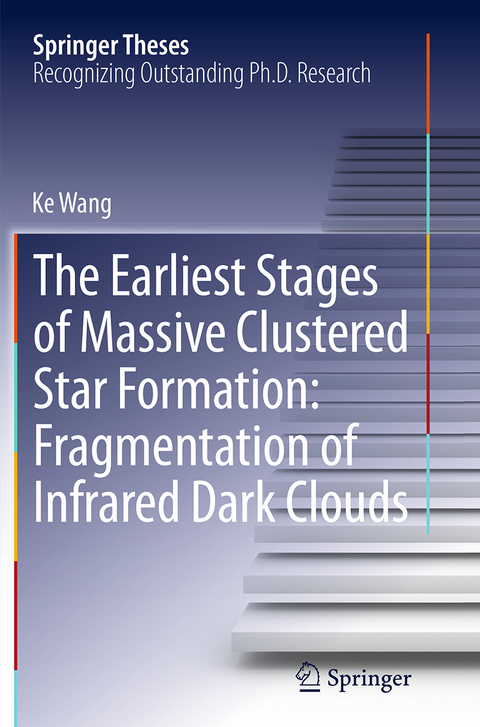
The Earliest Stages of Massive Clustered Star Formation: Fragmentation of Infrared Dark Clouds
Springer Berlin (Verlag)
978-3-662-52428-2 (ISBN)
Dr. Ke Wang is currently a research fellow at the European Southern Observatory (ESO) headquarters in Garching, Germany, with functional work at the Atacama Large Millimeter/submillimeter Array (ALMA). He received his Ph.D degree in astrophysics from Peking University in 2012. Most of his thesis work was carried out at the Harvard-Smithsonian Center for Astrophysics (CfA) in Cambridge, USA, during a pre-doctoral fellowship with duty at the Submillimeter Array (SMA). In 2011, he was awarded a European Union grant to conduct his first postdoctoral research at the Kapteyn Astronomical Institute in Groningen, the Netherlands. Afterwards, he joined ESO in October 2012. He is an enthusiastic astronomer with expertise in radio interferometers, a frequent user of world class telescopes including the SMA and the Jansky Very Large Array (JVLA), now an ALMA astronomer on duty. His main research interest is the early phase of massive star formation, from Planck cold cores, infrared dark clouds to interstellar filaments.
Scientific background.- An Infrared Point Source Survey.- The "Dragon" Nebula G28.34+0.06.- The "Snake" Nebula G11.11-0.12.- The Infrared Dark Cloud G30.88+0.13.- A New Evolutionary Picture.
| Erscheinungsdatum | 23.08.2016 |
|---|---|
| Reihe/Serie | Springer Theses |
| Zusatzinfo | XX, 145 p. 37 illus., 23 illus. in color. |
| Verlagsort | Berlin |
| Sprache | englisch |
| Maße | 155 x 235 mm |
| Themenwelt | Naturwissenschaften ► Geowissenschaften ► Geologie |
| Naturwissenschaften ► Geowissenschaften ► Meteorologie / Klimatologie | |
| Naturwissenschaften ► Physik / Astronomie ► Astronomie / Astrophysik | |
| Technik ► Elektrotechnik / Energietechnik | |
| Schlagworte | Astronomy, Observations and Techniques • Astronomy, space and time • atmospheric sciences • earth sciences • Gravitational Collapse and Fragmentation • High Angular Resolution • Infrared Dark Cloud • Interstellar Maser • Interstellar Medium • Massive Star Formation • Microwaves, RF and Optical Engineering • Microwave technology • Physics and Astronomy • Protostellar Jet and Outflow • Radio Interferometer • Sub Millimeter Array • Very large array |
| ISBN-10 | 3-662-52428-7 / 3662524287 |
| ISBN-13 | 978-3-662-52428-2 / 9783662524282 |
| Zustand | Neuware |
| Haben Sie eine Frage zum Produkt? |
aus dem Bereich


